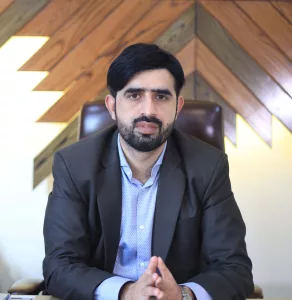As a fragile ceasefire took effect on Friday, tens of thousands of displaced Palestinians began returning to their homes in northern Gaza, many finding their neighborhoods reduced to rubble after weeks of relentless Israeli bombardment.
The truce—brokered through a broader international initiative—offers temporary relief after months of violence but leaves Gaza’s future governance deeply uncertain amid a mounting humanitarian crisis.
Palestinian factions assert control over Gaza
In a joint statement, Hamas, Palestinian Islamic Jihad, and the Popular Front for the Liberation of Palestine (PFLP) reaffirmed that Gaza’s governance must remain an internal Palestinian affair, rejecting any external administration.
“We renew our rejection of any foreign guardianship,” the factions declared. “Decisions about Gaza’s administration must be made solely by Palestinians.”
The groups announced plans to convene an “urgent comprehensive national meeting” aimed at rebuilding institutions, forming a unified political strategy, and defining Gaza’s post-ceasefire roadmap.
It remains uncertain whether Fatah, the ruling party of the Palestinian Authority, will participate in the talks.
Truce terms and governance debate
According to diplomatic sources, the ceasefire’s initial phase reportedly aligns with a 20-point plan proposed by U.S. President Donald Trump, which calls for establishing a temporary “Board of Peace”—an international oversight body supervising a technocratic government in Gaza.
While both Israel and Hamas accepted the truce, Palestinian factions made it clear they oppose any foreign-imposed framework or international oversight of Gaza’s internal governance.
Humanitarian provisions and captive releases
Documents obtained by Al Jazeera reveal that the agreement requires Hamas to release Israeli captives within 72 hours, without media coverage or public celebrations.
Other key provisions include the daily entry of at least 600 aid trucks, restoration of water infrastructure, and the establishment of emergency camps for displaced residents.
Following the truce, Gaza Civil Defence teams recovered 63 bodies from the streets of Gaza City, though thousands remain missing beneath the debris.
Al Jazeera correspondent Hani Mahmoud described Gaza City as “almost unrecognizable,” noting that the main coastal road leading north was lined with shattered buildings and burned-out vehicles.
Reconstruction and debris removal begin
Later on Friday, Gaza’s Government Media Office emphasized the urgent need for a comprehensive reconstruction plan. The first phase of the ceasefire permits the import of heavy machinery to clear rubble—a critical step toward restoring basic infrastructure.
Under the agreement, UN agencies and international humanitarian organizations will coordinate aid delivery, effectively sidelining the Gaza Humanitarian Fund (GHF), which had faced accusations of mismanagement and safety risks.
Human rights organizations previously described GHF’s aid-distribution zones as “death traps,” after several civilians were reportedly killed while attempting to access food and medical supplies in Israeli-controlled areas.
Despite the criticism, GHF Executive Director John Acree said the organization would continue its relief operations:
“GHF’s team on the ground continues to provide aid and food to all those in need. We will not rest so long as there are Gazans in need,” he said.










